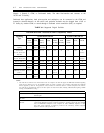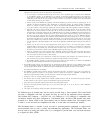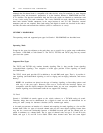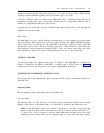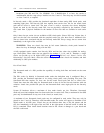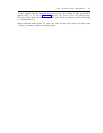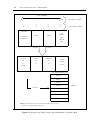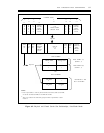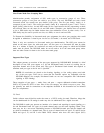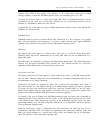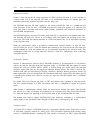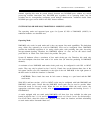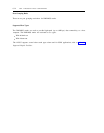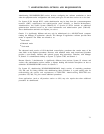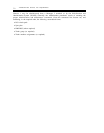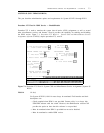
6-10
PORT TYPES/INSTALLATION COMPATIBILITIES
Line+Trunk Mode Port Grouping Rules
Administration permits assignment of DS1 trunk types in consecutive groups of two. These
consecutive groups of two ports are called a port family. The real DS1/DMI and each virtual
line+trunk mode slot contain two port families (four ports). The first port family, family A, is
composed of ports 0 and 1. The second port family, family B, is composed of ports 2 and 3. From a
digital facility point-of-view, tie and DID trunks are the same because the bits representing on-hook
and off-hook states are the same for tie and DID trunks. Therefore, port families that are optioned
as tie or DID trunks may be further broken down into subfamilies of one. In other words, a tie or
DID family may be used to provide two ties, two DIDs, or one tie and one DID.
To illustrate the flexibility in line+trunk mode port assignment, the above port grouping rules could
be applied to administer a virtual 4-port slot for two CO trunks, a tie trunk, and a DID trunk.
There is only one restriction in line+trunk mode port administration. The OPS ports cannot be
mixed on the same 4-port slot with trunk ports. All four ports on a line+trunk slot must be either
lines or a mixture of trunks. No restrictions are made on the trunk groups in which the DS1/DMI
trunks must be placed. The DS1/DMI trunks do not all need to be in the same trunk group, unless
there are other reasons for them to be in the same trunk group.
Supported Port Types
This subpart presents an overview of the port types supported by DS1/DMI-BOS. Included is a brief
description of how DS1 ports appear to a far end D4-channel bank (in terms of working into an
equivalent channel unit at the switch end). The type of D4-channel bank channel unit required to
terminate each port type at the far end is specified.
NOTE: No restrictions are placed on the framing, signaling, or line coding options used with
any of the port types. Take care to assure that the interface options are compatible with the
DS1/DMI endpoint (for example, D4-channel banks are not now compatible with 24th-channel
signaling or ESF framing).
Three categories of port types — trunks, lines, and ports — support dedicated switched connections
(DSCs) for System 85 R2V3 or later. Ports in the last category are called transparent ports. They
are generally not used for connections to the endpoints described in this document but are included
here for completeness.
Tie Trunk
Switch software treats digital tie trunks the same as a SN233 analog tie trunk. Therefore, things that
can be administered for an analog tie trunk may also be administered for a digital tie trunk.
The DS1/DMI tie trunk port presents an interface of a channel unit requiring tie trunk signaling to a
far end D4-channel bank. Six types of tie-trunk channel units use the same signaling format. Thus,
there may not be a one-to-one relationship between a DS1/DMI tie-trunk port and the channel unit
on which it terminates at a channel bank. The six types of channel units are type-I, II, and III 4-wire
E&M and type-I, II, and III 2-wire E&M. These channel units have the same digital (DS1)



